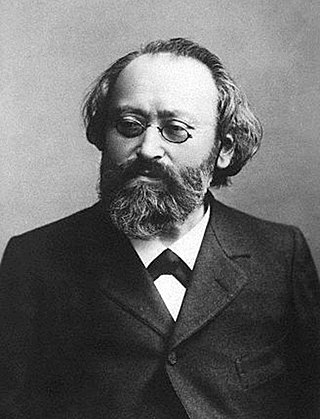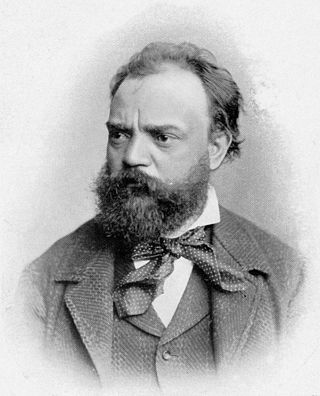
Max Bruch was a German Romantic composer, violinist, teacher, and conductor who wrote more than 200 works, including three violin concertos, the first of which has become a prominent staple of the standard violin repertoire.

The Violin Concerto in D major, Op. 61, was written by Ludwig van Beethoven in 1806. Its first performance by Franz Clement was unsuccessful and for some decades the work languished in obscurity, until revived in 1844 by the then 12-year-old violinist Joseph Joachim with the orchestra of the London Philharmonic Society conducted by Felix Mendelssohn. Joachim would later claim it to be the "greatest" German violin concerto. Since then it has become one of the best-known and regularly performed violin concertos.

Eugène-Auguste Ysaÿe was a Belgian virtuoso violinist, composer, and conductor. He was regarded as "The King of the Violin", or, as Nathan Milstein put it, the "tsar".

Joseph Joachim was a Hungarian violinist, conductor, composer and teacher who made an international career, based in Hanover and Berlin. A close collaborator of Johannes Brahms, he is widely regarded as one of the most significant violinists of the 19th century.

A violin concerto is a concerto for solo violin and instrumental ensemble. Such works have been written since the Baroque period, when the solo concerto form was first developed, up through the present day. Many major composers have contributed to the violin concerto repertoire, with the best known works including those by Bach, Bartók, Beethoven, Brahms, Bruch, Dvořák, Khachaturian, Mendelssohn, Mozart, Paganini, Prokofiev, Sarasate, Shostakovich, Sibelius, Tchaikovsky, and Vivaldi.

The Violin Concerto in D major, Op. 77, was composed by Johannes Brahms in 1878 and dedicated to his friend, the violinist Joseph Joachim. It is Brahms's only violin concerto, and, according to Joachim, one of the four great German violin concerti:
The Germans have four violin concertos. The greatest, most uncompromising is Beethoven's. The one by Brahms vies with it in seriousness. The richest, the most seductive, was written by Max Bruch. But the most inward, the heart's jewel, is Mendelssohn's.

Felix Mendelssohn's Violin Concerto in E minor, Op. 64, is his last concerto. Well received at its premiere, it has remained among the most prominent and highly-regarded violin concertos. It holds a central place in the violin repertoire and has developed a reputation as an essential concerto for all aspiring concert violinists to master, and usually one of the first Romantic era concertos they learn. A typical performance lasts just under half an hour.

The Scottish Fantasy in E-flat major, Op. 46, is a composition for violin and orchestra by Max Bruch. Completed in 1880, it was dedicated to the virtuoso violinist Pablo de Sarasate.

Max Bruch's Violin Concerto No. 1 in G minor, Op. 26, is one of the most popular violin concertos in solo violin repertoire and, along with the Scottish Fantasy, the composer's most famous work. It has been recorded often.

The Violin Concerto in A minor, Op. 53, is a concerto for violin and orchestra composed by Antonín Dvořák in 1879. It was premiered in Prague on October 14, 1883. by František Ondříček, who also gave the Vienna and London premieres. Today it remains an important work in the violin repertoire.
Violin Concerto No. 2 in D Minor "in the Hungarian Manner", Op.11 is a Romantic violin concerto written by violinist Joseph Joachim (1831–1907). Rarely performed, it has been described as "the Holy Grail of Romantic violin concertos." by music critic David Hurwitz.

Max Bruch's Violin Concerto No. 2 in D minor, Op. 44 was composed during 1877, following a failed attempt in 1874, and dedicated to the great Spanish violinist, Pablo de Sarasate. It was premiered in London by Sarasate, conducted by Bruch, on 4 November 1877.
Max Bruch's Serenade in A minor, Op. 75 is a composition for violin and orchestra, which was composed in 1899.

Tivadar Nachéz was a Hungarian violinist and composer for violin who had an international career, but made his home in London during his career.
The Concerto for Clarinet, Viola, and Orchestra in E minor, Op. 88, by Max Bruch was composed in 1911 for his son, Max Felix Bruch, and received its first performance in 1912, with Willy Hess (viola) and the composer's son Max Felix Bruch (clarinet) as the soloists. It consists of three movements:
- Andante con moto
- Allegro moderato
- Allegro molto
Max Bruch's Romance for Violin and Orchestra in A minor, Op. 42, was composed in 1874. Bruch had intended the piece to form the first movement of a projected second violin concerto. However the composer found himself unable to progress beyond the first movement and chose to publish the work as a standalone concert piece dedicated to violinist Robert Heckmann who along with Joseph Joachim had assisted Bruch with the violin part.

Hideko Udagawa is a Japanese violinist based in London, United Kingdom.
A concert piece is a musical composition, in most cases in one movement, intended for performance in a concert. Usually it is written for one or more virtuoso instrumental soloists and orchestral or piano accompaniment.

The Spanish Dances are a collection of eight pieces for violin and piano composed by Pablo de Sarasate between 1877 and 1882 and published in four books, each book combining two dances contrasting in rhythm and character. They are among Sarasate's best known works.

The String Octet in B♭ major, Op. posth., was composed by Max Bruch for four violins, two violas, cello and double bass. Completed in 1920, the year of his death, it is his last work and would not be published until 1996. The work is also known under the name Concerto for String Orchestra (Octet).













